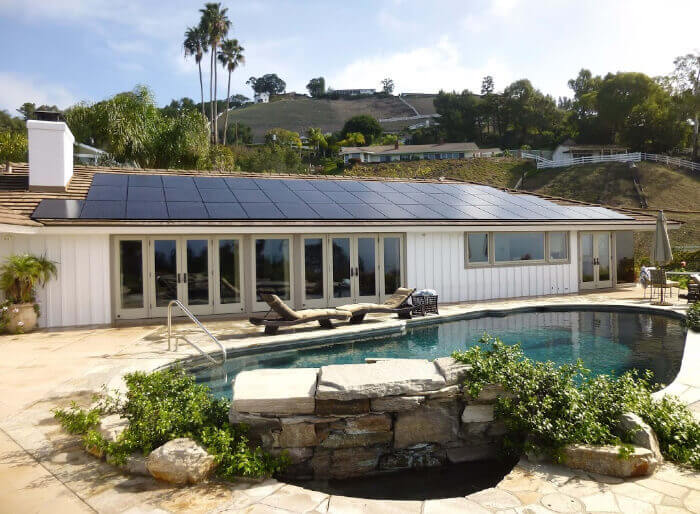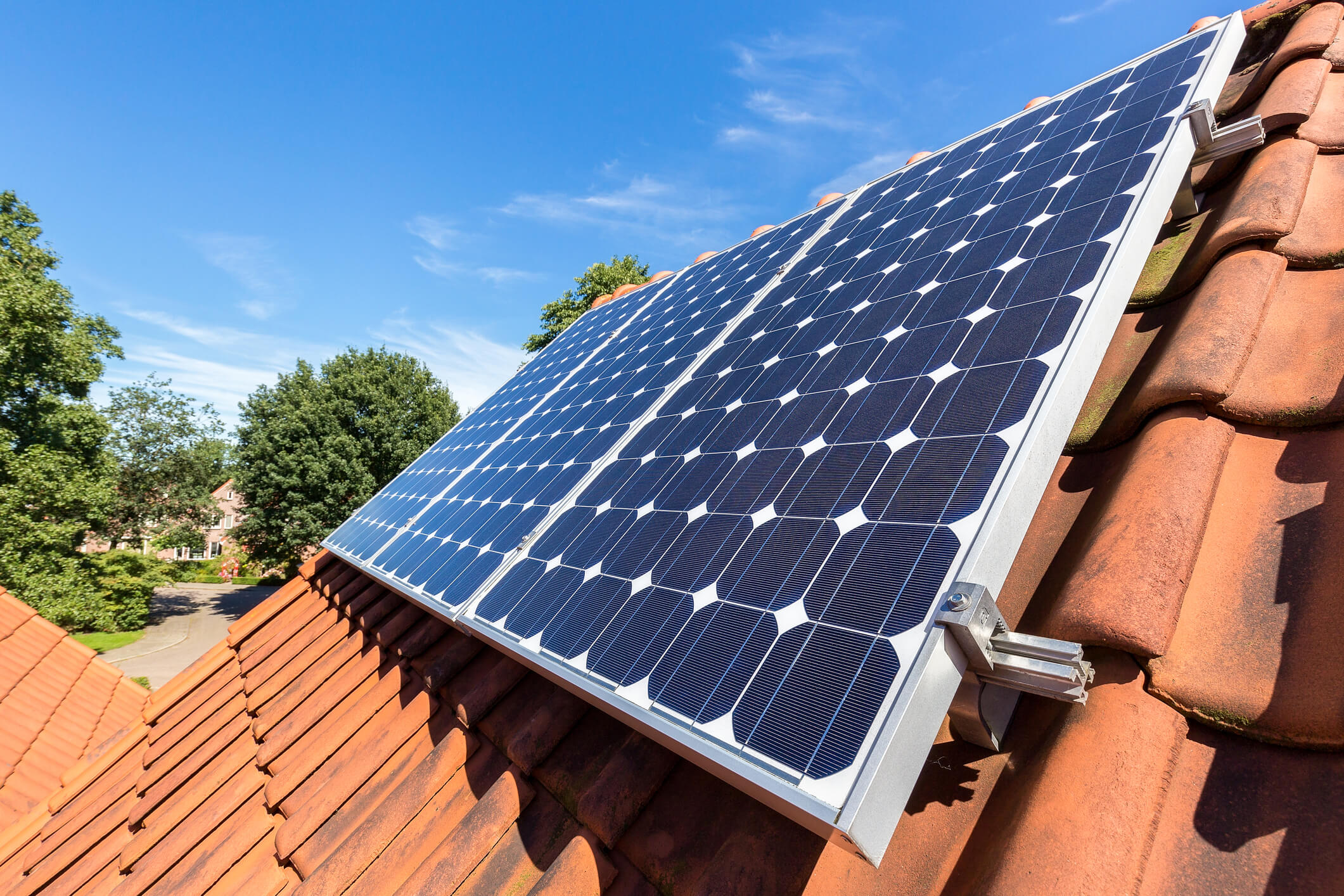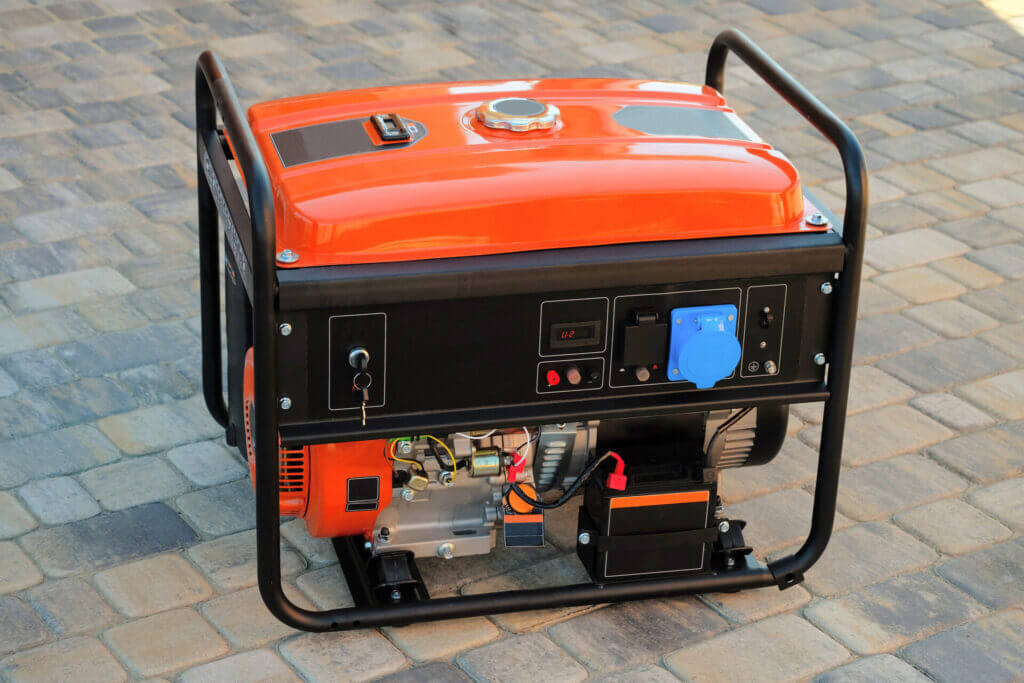Are you doing a solar project?
Modernize can pair you with three to four pros in your area, so you can compare options and save time and money.
California began paving the way in solar energy in 2013 and became one of the top states for the most residents using solar power. As a result, home values increased by up to $15,000 on average, according to Berkley Lab, one of the federal government’s national renewable energy laboratories. California solar was here to stay.
Then, in 2018, the state made history when they began requiring builders to install solar panels on new homes starting in the year 2020. While installing solar panels can be expensive, it’s an endeavor that pays off in energy cost savings for the homeowner.
At the time, California energy officials estimated that the average resident would save about $80 a month on their heating, cooling, and electric bills once panels were installed.
In this article, we’ll go over some of the incentives and rebates you can look for as you get the ball rolling on your project.

California Solar Panels: Incentives, Rebates, and Other Savings
There are currently 192 ways for homeowners to increase the value of their property by installing solar panels for houses in California.
You can find details about each program by navigating a federal database and filtering by state. The resource is known as Database of State Incentives for Renewables & Efficiency (DSIRE). Professional contractors should be well versed in these cost saving measures.
As of December 2022, there are also new rules in place for California homeowners as it pertains to solar panels. This updates the original rules that were put in place nearly 30 years ago.
Some say the new rules will de-incentivize homeowners from installing solar panels. They worry this could cause a setback in the state’s journey toward its goal of producing zero-carbon electricity by 2045. Others say it was high-time to reevaluate the rules as consumers habits changed and the cost of installing solar panels decreased.
California Solar Incentives
Here’s a quick overview of some of the most popular incentive programs currently available in the state.
- The Disadvantaged Communities- Single-Family Homes program. It provides no-cost rooftop solar installations to households that meet certain income requirements.
- The Property Tax Exclusion for Solar Energy Systems and Solar Plus Storage System program. It says that anyone who installed solar energy systems from 1999 through 2024 will not have to pay increased property taxes.
- The Sales and Use Tax Exemption. It says that any of the equipment you need to generate or store electricity, including your solar panels and batteries, are exempt from tax in the state.
- The state also has its own Net Metering programs. This allows residents to sell back to the grid any of the power they generate but don’t need. As of 2022, some of those benefits were cut back. But you can still apply for permission to operate your system using the 2022 rates.
- And finally, the Self-Generation Incentives program provides rebates for homes and businesses that install energy storage systems.
There are also national programs in place that can help you to get some money back when you install your solar system.
Because of the expansions President Joe Biden approved, the credit now also covers more solar and storage equipment expenses. This includes energy storage devices with a capacity rating of 3-kilowatt hours or more.
Property Tax Exclusion for Solar Energy Systems
Installing solar panels is costly, but it will increase your home’s value. Not only that, the state is so passionate about this energy source that it will, in a sense, pay you back for your project.
California offers several tax exclusions for solar panel systems. These apply to most systems, including roof panels and solar heating systems. DSIRE does outline some exceptions, which include solar heating systems for your pool or hot tub.
In addition to the panels themselves, the state also provides incentives and rebates for the following:
- Storage devices
- Power conditioning equipment
- Transfer equipment
- Parts
Net Metering
If your solar panels collect more energy than you use, you can sell your excess energy back to your energy provider as of a program put in place in the state in 1996.
Find the Right Contractor for Your Solar Project
Whether you’re ready to begin your project now or need some expert advice, our network of contractors are here to help. With a few simple questions, we’ll find the best local professionals for you
The program allows homeowners to cash in either through credits toward their bills or by carrying that energy forward to use it for the following month. You can stock up on the energy for a full year and sell it back for payment as well.
Be sure to check your specific city or area for additional programs and rebates as many places such as San Francisco, Fresno and San Diego, among others, have their own programs in place.
Is Now a Good Time to Install Solar Panels in CA?
Wondering when to pounce on these rebates and incentives? The good news is, most of the programs currently in place in California will be effective beyond 2025. There’s no need to rush to get things going.
Of the current programs in effect, just one affecting your home’s solar system will expire at the end of 2024. That is the property tax exclusion for solar energy systems and solar plus storage systems, which retroactively applies to any solar system installed since 1999 through 2024. Read more about that at DSIRE’s site.
That said, the best time to install solar panels is when you feel personally ready to handle the project and the cost. You will benefit from installing this eco-friendly option at any point in your homeowner journey.
The Cost of Installing Solar Panels in California
The estimated cost of installing solar panels in your home will depend on the size of your home, the age of your roof and the types of solar panels you select.
Because solar is such a popular energy method in California, and because the average solar panel system is overall smaller in this state than the national average, you will likely pay less than the national average to install your panels.
Average Cost
The average cost for solar panel installation for a 2,000 square foot home is anywhere from $14,000 to $20,000 for a 6 kW system, after taking advantage of available rebates and incentives.
Most cost estimates are based on the price per watt, which is between $3 and $4.50. Homes have systems that generate anywhere between 3kW and 8kW. You can get a better estimate for your particular home by using the Modernize solar panel cost calculator.
Solar Panel Types
Your project could increase in price depending on the type of material your panels are made of. Monocrystalline solar panels, cost between $1 to $1.50 per watt. Polycrystalline solar panels cost $0.90 to $1 per watt, but they are not as energy efficient as other kinds. Finally, thin-film solar panels cost between $1 and $1.50 per watt.
You can read more about the types of solar panels and their differences to decide.
Solar panels can be a costly investment, but there are many financing options available. You can purchase your panels with cash or credit. There are also programs that allow you to finance the purchase or lease the power through various agreements in the state of California. Installing solar panels can also make you eligible for tax breaks and other incentives.
Other Factors That Could Increase Your Solar Costs
As you look to install solar panels, consider the following factors that could impact this project in your area:
- Roof condition: Your roof’s age, size and even shape can affect solar panels and how they function. Roofs with a slope between 15 and 40 degrees are typically the most efficient for solar panel operation according to the Department of Energy. Of course, you’ll need to start with a solid roof. Make sure yours is not in need of immediate repairs and that potential problems such as leaks have been accounted for.
- Local regulations: The state of California is so supportive of solar panels that they’ve implemented a law that prohibits HOAs from restricting them. Still, there could be some requirements for installation specific to your neighborhood. Be sure to do your research before beginning the project.
- Insurance: Once your panels have been installed, you’ll want to consider having them insured. You can typically add panels to your current homeowner policy, but be sure to check before you begin the project.
If you’re looking to add solar panels to your home, start by getting in touch with a professional contractor. You can refer to the Modernize digital Contractor Checklist, a free resource with a step-by-step guide to assist with your solar panel project.
Of course, California is not the only state offering these incentives to consumers. Check out our list of the top 10 states in the country ranked by their solar incentive programs.
Find the Right Contractor for Your Solar Project
Whether you’re ready to begin your project now or need some expert advice, our network of contractors are here to help. With a few simple questions, we’ll find the best local professionals for you
Reviews from Real Homeowners
Welcome to Homeowner Resources! We are the Modernize blog. Modernize pairs more than 3 million homeowners a year with pre-vetted contractors in their area. This blog started because we believe homeowners should know everything about their homes, from how their HVAC works to which front door colors they might love. On Homeowner Resources, you can find information on every part of your home, right down to how you can negotiate with contractors to get the best price. Here's more about the blog.
Need a contractor? Learn more about how Modernize finds the right pro for you.




